By Carol Gray, LMT, CST, RPYT, ERYT-200
Once again, people ask if it’s safe. This time, it’s about inversions during pregnancy. Once again, the short answer is yes.
The Lineage
Yoga practices (including the physical practices) were originally developed by men for men. At first, the “rules” and precautions surrounding yoga practice for women were developed by men for women to follow. While pregnancy can be a time of great strength and robust health, it has often been regarded as a time of fragility, weakness and vulnerability. Accordingly, the practice of yoga during pregnancy has been wrapped in a blanket of controversy and fear.
The Myths
One of the most longstanding and persistent myths surrounding yoga during pregnancy revolves around inversions. Some of the prohibitions have to do with the possibility of causing the energy to flow toward the head – instead of toward the pelvis. Frankly, I’m not convinced it works that way, and even if it does, I’m not convinced that it creates a problem. Sometimes inversions are “contraindicated” during first trimester. There is no scientific or medical evidence to support this idea. Another fear is that it will cause your baby to turn into a breech (head up) position. Baby heads are the heaviest parts of their bodies, to be sure. However, no pregnant (or non-pregnant) person is ever going to spend the majority of their time upside down just because I (or anyone else) says it’s OK. Gravity and your amount of upside-down time are all in your favor here. Stop worrying about it.
What’s Important?
As always, you are your own teacher and the best expert on your body and your baby’s body. If a forward fold or a supported shoulder stand gives you heartburn, none of what I can tell you about the benefits will actually matter.
Why Should You Do Yoga Inversions During Pregnancy?
The main reason to practice inverted poses in pregnancy is to move babies into roomier parts of the parental pelvis. The pelvis is smaller down low. It’s roomier toward the top. More space gives babies opportunities to assume more ideal positions for continued gestation and ultimately, birth. Besides, (think about it) how would you like having your head turned in one direction only? Would you like it for a day, a week, a month, three months? Babies whose movements are so restricted end up born with twists and lateral flexion patterns in their bodies. They literally grow into these shapes and without help don’t just grow out of them. Trust me, I know this. These torsions and c-curves are a major source of compromised structure and function in what are otherwise medically-normal babies. As a Craniosacral Therapy practitioner/teacher and fine-tuner of babies I have seen a steady increase of babies so-affected in my private practice and free clinics over the last almost 30 years.
Do You Want More Reasons?
Yoga Inversions During Pregnancy…
- Calm the nervous system.
- Relax the pelvic floor.
- Help resolve a posterior pelvic tilt.
- Lengthen the torso.
- Enhance return blood flow.
- Help with varicosity discomfort.
- Provide relief for round ligament pain.
modern-Day Realities for Pregnant People (In Industrialized Countries)
Yoga inversions are the antidote for seated lifestyle. Period. Sedentary, seated occupations are the norm for pregnant people in industrialized countries. Driving or riding in cars and sedentary home life all contribute to the problem of babies dropping deeply into the maternal pelvis and staying there days and weeks (sometimes months) before the onset of labor. Engagement – defined as fixation of the fetal presenting part in the maternal pelvis – really shouldn’t happen until the onset of active labor. It’s common most anytime in the third trimester these days, but it’s not necessarily normal. It ISN’T cause for rejoicing when it happens at 30 weeks. The operative word here is fixation. It’s also called fetal constraint. This all means stuck. Babies rarely get stuck in ideal positions for birth. If they were in ideal positions they would be able to glide high, low and back again in their parent’s pelvis. We see fewer babies these days who can actually do that.
What Qualifies as an Inversion, Anyway?
Does all of this mean that I’m advocating for daily handstands for pregnant people? No. Any posture that gets the hips higher than the shoulders qualifies. Almost anyone who can otherwise safely attempt a prenatal yoga class can do inversions that will be helpful. It makes sense to mobilize the pelvis first with poses otherwise known as hip openers. I’ll talk about that in another post. Here’s a partial list of pregnancy yoga inversions:
- Wide-Legged Standing Forward Bend – Prasarita Padottanasana
- Downward Facing Dog – Adho Mukha Svanasana
- Dolphin – Ardha Pincha Mayurasana
- (Puppy Dog) Cow/Cat (on forearms) – Chakravakasana
- Supported Shoulderstand – Salamba Sarvangasana
- Supported Headstand – Sirsasana
More About How The MamaSpace Yoga Method Addresses Fetal Constraint
Here’s the Link to the video about the MamaSpace Yoga Method.
3 Prenatal Yoga Inversion How-To Videos Just for You:
1. Inversion Love (Clip) With Amarylis Fernandez
2. Supported Shoulderstand With Carol Gray
3. Pregnancy Headstand With Carol Gray
About Carol Gray
 Carol is the founder and owner of MamaSpace Yoga. She has been a therapeutic bodyworker in private practice for over 30 years. She specializes in Craniosacral Therapy for pregnant and postpartum people and infants. Carol has spent years developing hands-on techniques to enhance the mobility in pregnant bodies including the bony pelvis, the abdominal organs, the support structures and lower segment of the uterus. She is proud to have pioneered the integration of this gentle manual therapy into prenatal care, the birth place and postpartum care for birthing parents and babies. The goal is to give babies more room to develop, grow and get born. Her specially-designed yoga classes have grown naturally from the roots of bodywork and yoga.
Carol is the founder and owner of MamaSpace Yoga. She has been a therapeutic bodyworker in private practice for over 30 years. She specializes in Craniosacral Therapy for pregnant and postpartum people and infants. Carol has spent years developing hands-on techniques to enhance the mobility in pregnant bodies including the bony pelvis, the abdominal organs, the support structures and lower segment of the uterus. She is proud to have pioneered the integration of this gentle manual therapy into prenatal care, the birth place and postpartum care for birthing parents and babies. The goal is to give babies more room to develop, grow and get born. Her specially-designed yoga classes have grown naturally from the roots of bodywork and yoga.
Carol has dedicated her professional life to supporting expectant and new families by promoting gentle aware birth. She has attended births for over 35 years – at first as a doula and from 2000 to 2012 as a midwife. She has since retired from attending births in order to focus on practicing and teaching CST and prenatal yoga. Her many years as a birth worker have forever changed her and her worldview. Those experiences remain an integral part of who she is as a therapist and teacher.
Carol is the founder and director of the The Carol Gray Center for CST Studies®. She teaches high-quality, small group classes that are appropriate for bodyworkers, birth attendants and other health professionals. She is approved by the National Certification Board for Therapeutic Massage and Bodywork (NCBTMB) as a continuing education approved provider.


